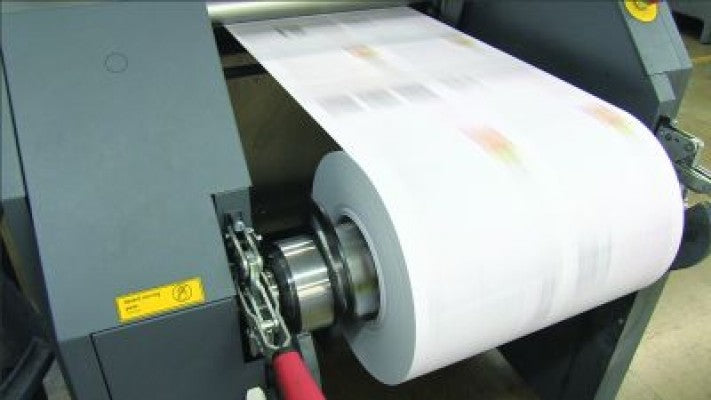
Labels from point A to point B
To get your labels from a blank sheet to a finished product, from point A to point B, they must undergo a few basic processes that are often overlooked. First, the label is fed into the printer, then it is scanned by a sensor, and finally it is printed out as a final product. It is easy though, in our everyday business, to assume that labels are simply shoved into the printer and spit out as a final product without taking into consideration its complex intricacies. This blog post now will be going over the process of feeding in labels into the printer and scanning them with the sensor.
Feeding
Feeding your label into your printer will always be the first step, and there are three primary ways of going about it. The three types below will distinguish those methods:
- Continuous Feed Printing – Label rolls used with this kind of printer are pushed through with a “tractor feed” technology. The core rolls as the labels are printed and the entire roll gradually gets smaller until it runs out.
- Sheet Fed Printing: – The Sheet Fed method is when individual sheets of labels are fed into the printer. This process is typically used for small label printing jobs, using only a couple sheets instead of a larger continuous roll.
- Page Orientation Printing – This changes the layout format of your printer. The two options are portrait or landscape, and depending on which option you choose on the computer template, it will affect how the labels are being printed.
Scanning
All label printers are equipped with a sensor to discover the beginning and end to the label. However, there are specifically three kinds of sensors, each one determining what kind of label you get. The following three descriptions indicate what makes each sensor unique:
- Label Gap – A label gap is when there are pieces of stripped material found between each die cut label. Sensors in the printer are then, after distinguishing the strips, able to read when the labels start and end.
- Sensing Slot / Notch – Sensing slots are the narrow oval holes centered on the label carrier between each label. Be careful of using these as printers have fixed or movable sensors, and which kind of sensor your printer has will determine how you use a sensing slot label.
- Black Mark – The last sensor option for labels are black marks on the carriers. These are usually printed on the backside of the carrier and the width is lined up with the sizes of the labels themselves. The Black Mark method of sensing is most often used with clear labels.
We at Print.Save.Repeat. sincerely hope this information was helpful! If you have any other questions regarding labels or toner, feel free to call us at 800-587-1173 and we will be happy to assist you.
